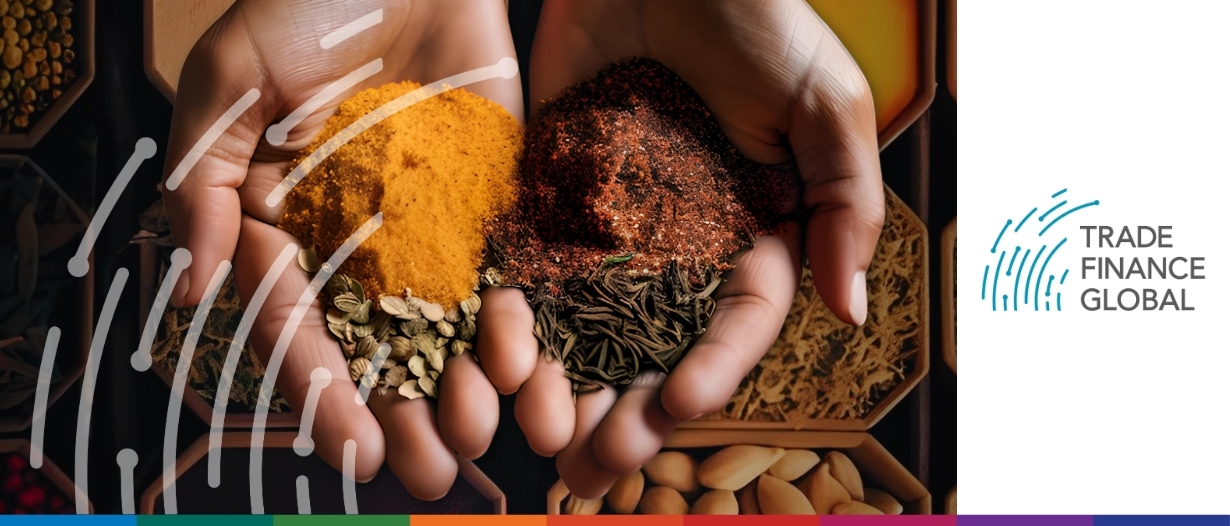The potential of this richly diverse region is vast, and as recent developments show, this potential is being adeptly fulfilled. As this edition will demonstrate, it is crucial to monitor trade finance developments in Africa and the Middle East, as they will likely inform the industry’s trajectory across the world.
It’s tough to put together a magazine around the theme of Africa and the Middle East. Encompassing around 2 billion people – 25% of the world’s population – the segmentation that we’ve chosen for this edition covers areas with enormous natural, cultural, political, and economic differences.
Africa is rich in various natural resources – including minerals, metals, and agricultural products – while the Middle East is predominantly known for its oil and natural gas reserves.
Africa is home to thousands of ethnic groups with diverse languages, traditions, and religions, while the Middle East, although culturally rich, has fewer ethnic and linguistic groups, with a predominant cultural influence of Arab traditions and Islam.
African countries often have varied political systems, including emerging democracies and some authoritarian regimes, whereas the Middle East features a mix of monarchies, theocracies, and authoritarian governments.
From a trade perspective, Africa is heavily influenced by its colonial history and primarily exports raw materials, while the Middle East’s trade is dominated by oil exports, with significant geopolitical implications for global energy markets.
As we dive into this edition, our aim is to provide a comprehensive understanding of the current trends and future prospects for trade finance in Africa and the Middle East. From cutting-edge innovations to shifts in risk management, we explore the key trends that are revolutionising the industry.
Unlocking potential through innovation
The 16th century spice trade put the AMEA region in the center of the global economy. Today, letters of credit are the new cloves and cardamom, as Africa and the Middle East have become critical players within global trade finance.
One of the most significant innovations reshaping the region is the digitalisation of trade finance processes, with traditional methods being replaced by cutting-edge technologies such as blockchain, artificial intelligence (AI), and machine learning.
Fintechs across the region are spearheading the drive towards financial inclusion. By offering innovative solutions tailored to the unique needs of local businesses, these firms can enable SMEs to access credit and other financial services more easily. This is particularly vital in a region where, according to the IMF, MSMEs comprise upwards of 90% of the businesses but often face challenges in securing traditional financing.
In many instances, innovative approaches to age-old methods are gaining traction. Deep-tier financing, which extends credit to suppliers at multiple levels of the supply chain, improves liquidity for smaller suppliers and strengthens the entire supply chain, making it more resilient to disruptions. AI-driven analytics in supply chain finance can also help provide real-time insights into cash flow and demand patterns, enabling businesses to make more informed decisions.
It’s not just the private sector pushing the innovation agenda; governments and public-private partnerships are emerging as powerful catalysts for change, driving the development and implementation of innovative trade finance solutions.
Initiatives such as Saudi Arabia’s Vision 2030 and the UAE’s National Innovation Strategy are creating a conducive environment for technological advancements, aiming to diversify economies and reduce dependence on oil revenues. In Africa, Mobile Money technology continues to grow rapidly, reaching $1.4 trillion in transaction value in 2023, a 14% year-on-year increase.
Collectively, these advancements are helping to position Africa and the Middle East as global hubs for innovation and trade.
Spotlight on risk management
Effective risk management remains a cornerstone of successful trade finance operations.
Across Africa, geopolitical risks – including ongoing conflicts and political instability – impact the trade and investment climates. In July and August, youth-led protests in Kenya, Nigeria, and Uganda about the cost of living, unemployment, and government corruption have led to widespread unrest and even real policy changes, with Kenyan President Ruto retracting an unpopular tax bill and replacing his cabinet as a result.
Economic risks in the Middle East are particularly tied to oil price volatility and significantly impact oil-dependent economies, such as Saudi Arabia and the UAE. Sharp changes in oil prices can have reverberating implications for government revenues and economic prospects in these nations.
Despite global disruptions and geopolitical conflicts, African and Middle Eastern trade remains resilient. The region’s strategic location and growing consumption in emerging markets position it as a future global trade hub.
The ICC Trade Register report shows a robust credit risk profile for trade finance in the MENA region, but challenges such as inflation, interest rates, and supply chain vulnerabilities continue to impact the business environment.
Africa’s evolving trade landscape
In Africa, the rise of mobile banking and fintech solutions is enhancing credit access and management, particularly for MSMEs.
Government initiatives such as the African Continental Free Trade Agreement (AfCFTA) are expected to create greater opportunities for regional trade. AfCFTA, which commenced in January 2021, created a single market of 1.3 billion people with a combined GDP of $3.4 trillion and is expected to boost intra-African trade by upwards of 50% by eliminating tariffs on most goods.
The African Development Bank (AfDB) is investing in infrastructure, such as roads, ports, and telecommunications, to help facilitate trade. The development bank also supports the development of regional trade agreements and invests in agricultural reforms to improve food security and create jobs in rural areas.
Despite these advancements, challenges remain. Trade barriers, such as non-tariff measures and inadequate infrastructure, continue to hinder seamless trade across the continent. Additionally, economic disparities between countries pose a risk to equitable growth and integration.
Many African economies are struggling with the strong US dollar because it raises the cost of dollar-denominated debt repayments and imports, which many African countries rely on for essential goods and services. This exacerbates inflationary pressures and strains foreign reserves, making it harder to manage finances and maintain economic stability.
A weakening of the dollar would ease these financial burdens, lower import costs, and improve debt sustainability, providing much-needed relief to African economies facing fiscal challenges.
As we present this edition, our goal is to provide you with a deeper understanding of the current trends and future prospects in trade finance, with a particular focus on Africa and the Middle East.
While these regions certainly have their differences, we hope that the insights and analyses provided throughout these pages by our many contributors will help equip you with an edge when navigating this complicated landscape.
We hope you find this edition both informative and inspiring as we continue to explore the possibilities of trade finance in Africa, the Middle East, and beyond.




























